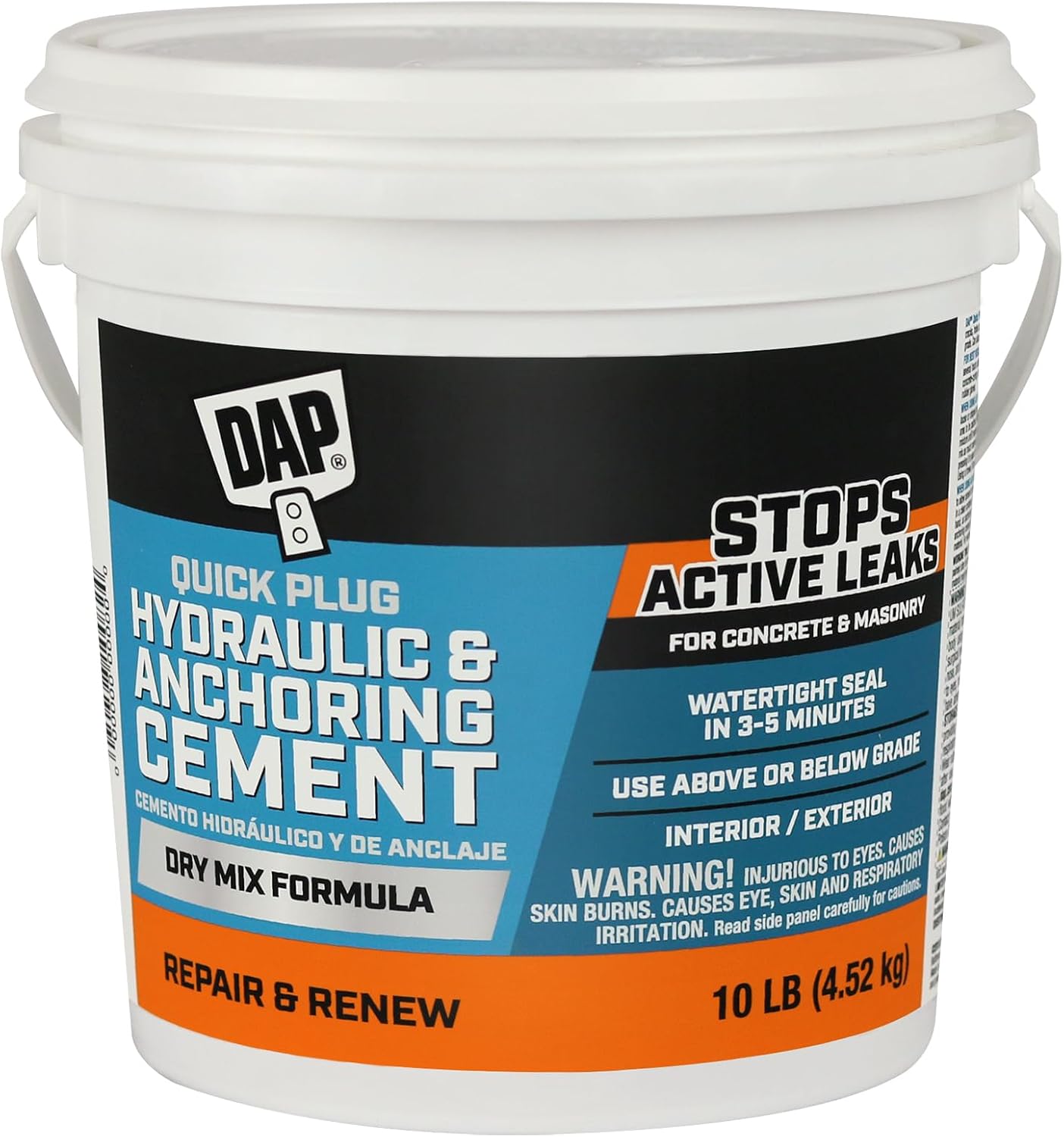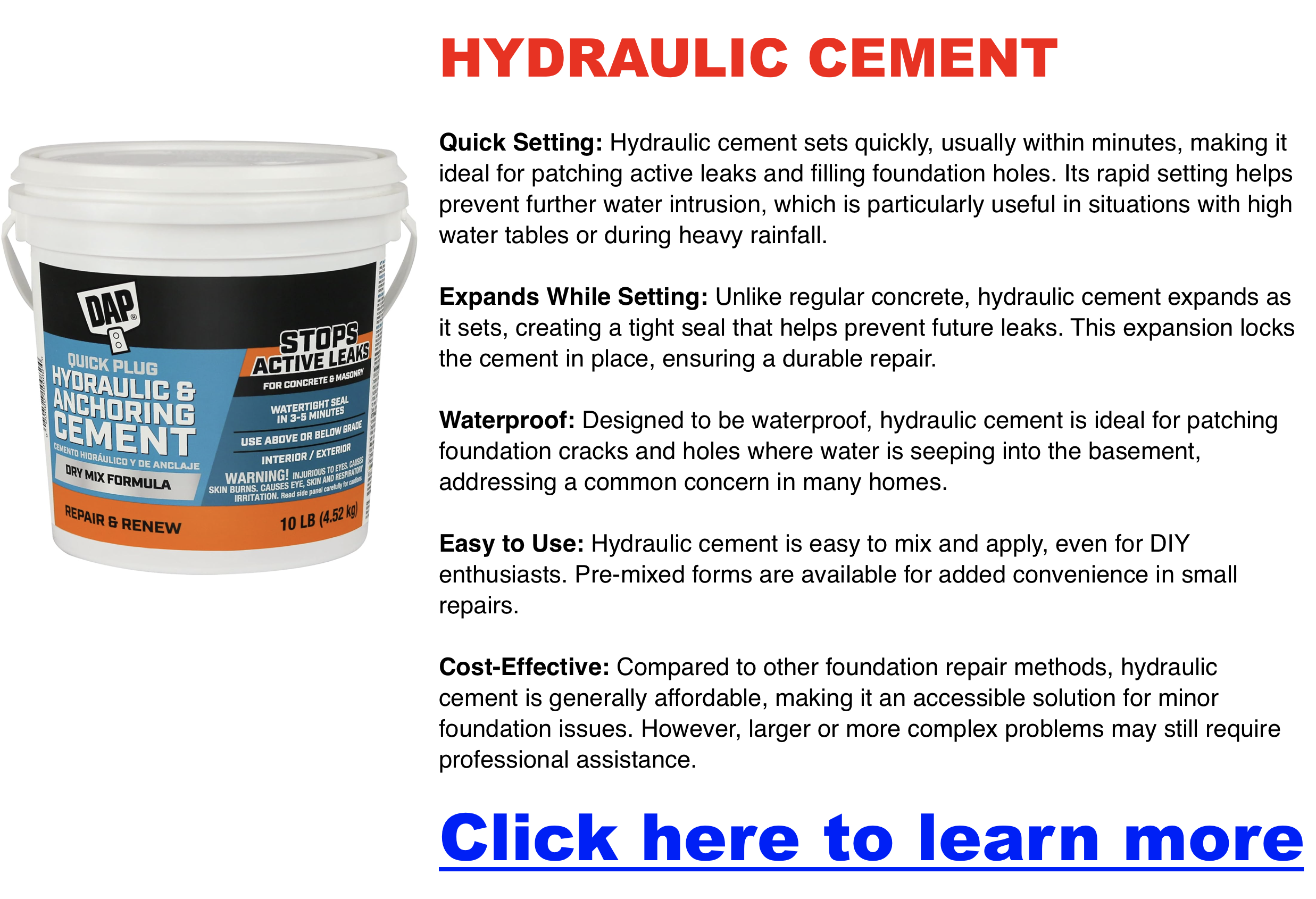Water Coming Through Floor
Water seeping through your floors can be a homeowner’s worst nightmare, especially when it’s unclear where the water is coming from or how to stop it. Left unchecked, water intrusion can lead to significant structural damage, mold growth, and costly repairs.
Initial Assessment and Immediate Actions
Click here for the best way to seal concrete permanently
The first and most critical step is to assess the situation and act quickly. Water damage can escalate rapidly, so you need to:
Identify the location and extent of the water damage
- Where is the water coming from? Is it confined to one room, multiple rooms, or the entire basement?
- How much water is present? Are you dealing with small puddles, a large pool, or a continuous flow of water?
Take safety precautions
- Turn off the power in the affected area to avoid the risk of electric shock.
- Disconnect electronic devices and move them to a dry area.
- Wear protective gear like boots and gloves when dealing with standing water.
Document the damage
- Take pictures and videos of the affected areas. This will be crucial for insurance claims.
- Keep a detailed record of the date, time, and extent of the damage, as well as any actions you take.
Click here to stop water seepage
Determine the Source of the Water
Identifying the source of water is key to determining the best solution. Water can enter your home from various places, including:
Foundation Cracks
Cracks in your foundation are common culprits, especially during heavy rains (you’ll see water flowing through) or when the water table rises. Over time, soil shifts or pressure from groundwater (hydrostatic pressure) can force water through small cracks in basement walls and floors.
Sloped Landscaping
If your property slopes toward your house, rainwater will naturally flow toward your foundation, increasing the chances of water seeping in. Similarly, if a neighbor’s yard slopes toward yours, their runoff can overwhelm your drainage system.
Clogged Gutters
Debris buildup in gutters can prevent rainwater from draining properly, leading to water pooling near your foundation and seeping into your basement.
Plumbing Leaks
Leaks from underfloor heating systems, slab pipes, or aging plumbing can cause water to rise through floors. These can be harder to detect, but signs include warm spots on the floor or unexplained increases in your water bill.
High Groundwater Levels
After prolonged rainfall, the soil around your foundation can become saturated, creating hydrostatic pressure that forces water through cracks in the basement floor.
Implement Immediate Mitigation Measures
Once you’ve identified the source, take immediate steps to prevent further damage:
Remove standing water
- Use a wet vacuum, mop, or towels to remove as much water as possible.
- For significant water buildup, consider renting a sump pump.
Dry the area thoroughly
- Ventilate and circulte the air by opening windows and using fans.
- Use dehumidifiers to reduce moisture in the air.
- Remove and dry any furniture, rugs, or belongings that may have been soaked.
Address the source of the leak
- For plumbing issues, turn off the water supply to the affected area or the entire house.
- For foundation cracks or drainage problems, you may need to contact a professional, such as a waterproofing contractor or plumber, to fix the issue properly.
Who To Call?
🚨 Who to Call for Water Seeping Through the Floor
🔧 Call a Plumber if:
-
You suspect a leak from pipes, especially under the floor or in walls.
-
You notice warm spots on the floor (possible radiant heating leak).
-
Your water bill has spiked for no reason (could indicate hidden leak).
-
The water smells clean or has no external source (like rain).
🛠 A licensed plumber can detect hidden leaks using pressure tests or thermal imaging and stop the flow of water before further damage occurs.
To Find Licensed Plumber Near You Call 1-380-237-1543
🏚 Call a Waterproofing or Foundation Specialist if:
-
The water appears after heavy rain or snowmelt.
-
You see it seeping through cracks in basement walls or floors.
-
Your home is on a sloped lot and water collects around your foundation.
-
There are visible foundation cracks.
These pros specialize in drainage systems, sump pumps, and exterior sealing—the long-term fixes for ground or foundation water issues.
🧼 Call a Water Damage Restoration Company if:
-
There’s already standing water, soaked carpets, or wet drywall.
-
You notice musty smells, signs of mold, or visible damage.
-
The area needs drying, sanitizing, and repairs.
Long-Term Solutions and Prevention
Preventing future water seepage involves a combination of maintenance and structural improvements:
Basement Waterproofing
- Interior drainage systems: These systems collect water that seeps through walls and floors, directing it to a sump pump.
- Exterior waterproofing: Sealing the foundation from the outside to prevent water from entering.
- Sump pump installation: Sump pumps remove excess groundwater that collects in a sump pit, preventing basement flooding.
Improve Drainage Around the House
- Ensure that your property slopes away from the foundation to direct water away from your home.
- Clean gutters regularly to avoid clogs and install gutter guards if necessary.
- Install French drains or trench drains to divert surface water away from the foundation.
Regular Maintenance
- Check for cracks in your foundation annually and seal them as needed.
- Inspect plumbing for leaks and repair as needed.
- Monitor your water bill for unusual spikes, which could indicate hidden leaks.
Consult Professionals
While some water seepage issues can be handled with DIY solutions, more serious problems require professional intervention. Here’s when to call in the experts:
- Plumber: For plumbing leaks, main water line breaks, or underfloor heating issues.
- Foundation Specialist: For significant cracks in the foundation or structural repairs.
- Waterproofing Contractor: For installing interior or exterior drainage systems and sump pumps.
- Water Damage Restoration Company: For major water damage, mold remediation, and repairs.
- Insurance Agent: Contact your insurance company to file a claim if your policy covers water damage.
Frequently Asked Questions (FAQ)
Q: How does sloped landscaping contribute to water seeping through the floor?
A: If your property slopes toward your house, rainwater will naturally flow toward the foundation, increasing the likelihood of water finding cracks and seeping into the basement. If a neighbor’s property slopes toward yours, their runoff could also become a problem.
Q: What are two signs of a main water line break?
A: A sudden drop in water pressure and pooling water in your yard near where the main water line enters your home are common signs of a water line break.
Q: How does hydrostatic pressure cause basement floor leaks?
A: Hydrostatic pressure is the force exerted by groundwater against your basement walls and floor. When the soil around the foundation becomes saturated, this pressure increases, forcing water through any existing cracks or weak points.
Q: Why is it important to clean clogged gutters promptly?
A: Clogged gutters prevent water from draining away from your house, causing water to pool near the foundation. This increases the hydrostatic pressure, which can lead to water seepage into a basement or crawl space.
Q: How can I detect a leak in my underfloor heating system?
A: A leaking underfloor heating system may cause warm spots on the floor where the leak is occurring. You might also notice an increase in your water bill due to the ongoing leak.
Q: What immediate actions should I take if I discover water seeping through the floor?
A: First, remove standing water to minimize damage. Then, find and identify the source of the water, whether it’s a plumbing issue, a foundation crack, or poor drainage. Open the windows and use fans or dehumidifiers to help dry out the space.
Q: What is the difference between a French drain and a trench drain?
A: A French drain is a gravel-filled trench with a perforated pipe that pulls groundwater away from your home. A trench drain is a channel, typically above ground, that collects and diverts surface water runoff.
Q: How can a high water bill indicate water seepage?
A: A sudden spike in your water bill could be a sign of an ongoing leak, possibly from pipes under the floor or within walls. This leak could eventually lead to water seeping through the floor.
Q: Why is proper ventilation crucial after a water seepage incident?
A: Proper ventilation helps dry out the affected area, preventing further damage and reducing the risk of mold growth, which can develop quickly in damp environments.
Q: When should I contact a water damage restoration professional?
A: If the water damage is extensive or you notice signs of mold, it’s important to call a water damage restoration professional. They can properly dry the area, remediate mold, and repair or replace damaged materials.
- Why Your Septic Tank Smells When It Rains (and What to Do About It)
- How to Handle Water-Damaged Wood in Your Home or Business
- How to Prevent and Remove Mold from Pillows: A Complete Guide
- Why Is My Carpet Always Wet? A Step-by-Step Guide to Identifying the Source of Moisture
- Signs of Septic System Failure and What It Means for Your Basement


